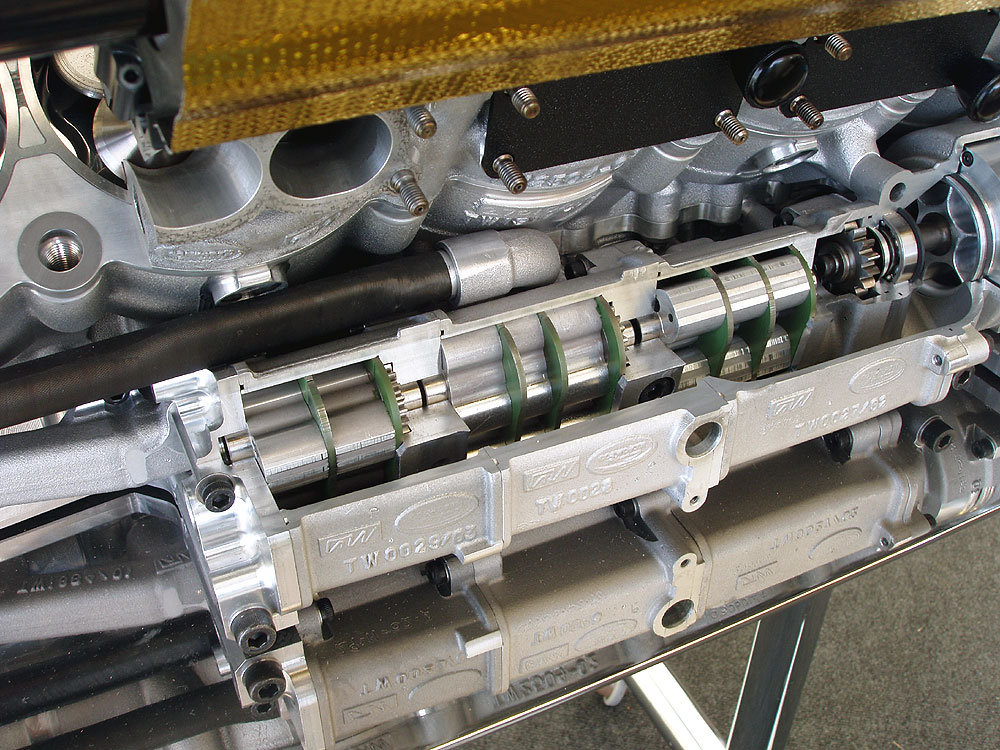riff_raff wrote:Edis,
You make a valid point about the oil scavenge pump performance being negatively affected by sub-atmospheric inlet pressures. This leads to cavitation in the pump flows. Of course, with the high oil scavenge volume ratios and low crankcase pressures used in high rpm racing engines (regardless of whether the scavenge ratio is 4:1 or 8:1), the scavenge pumps will always naturally operate with some degree of cavitation.
To improve the liquid oil scavenge efficiency of the pumps, these racing engines (F1, Indycar, etc.) normally employ a separate pump element for each crank throw. The pump inlet location and sump walls are shaped to take advantage of prevailing crank windage to direct the oil into the pump inlet. So the low pump inlet pressure is not so much of an issue in this regard.
There is also a drawback with having excessive scavenge volume ratio. Any scavenge volume ratio over 1:1 means that some air is being mixed with the scavenged oil, and higher scavenge ratios mean more air. Before the oil is fed to the pressure pump inlet, it is essential that as much of that air is removed from the oil as possible. Having even small amounts of air entrained in the oil flowing to the main/rod journal bearings can cause bearing damage. So there is some justification for keeping the scavenge volume ratio low.
riff_raff
I think you misunderstood my point about the crankcase pressure. The lower pressure isn't a concern for the scavenge pumps but can lead to higher stress in other parts of the engine.
The scavenge pumps themselves are more air pumps than oil pumps and when you suck air, or more correctly crankcase gases out of the engine the oil will follow. Without airflow the oil will stay inside the engine, increasing the oil level inside the crankcase. The flow of crankcase gases isn't related to the ratio between pressure and scavenge pumps but to how much gas leaks past the piston rings when the engine is operating. Larger scavenge pumps do however result in a lower crankcase pressure which is normally a good thing.
Separating oil from gases in a dry sump lubrication system isn't a problem, a well designed tank does that job well (using swirl). But in some cases, F1 included, a centrifugal separator is used to separate the oil from the gas. This allows the use of a smaller oil tank.
The sealed crankcases with one scavenge pumps per section is mostly to reduce losses due to crankcase pumping.
It do however seem like this whole issue is more related to engine braking than crankcase pressure.
Roots type scavenge pumps and centrifugal oil separator of a Cosworth F1 engine:



